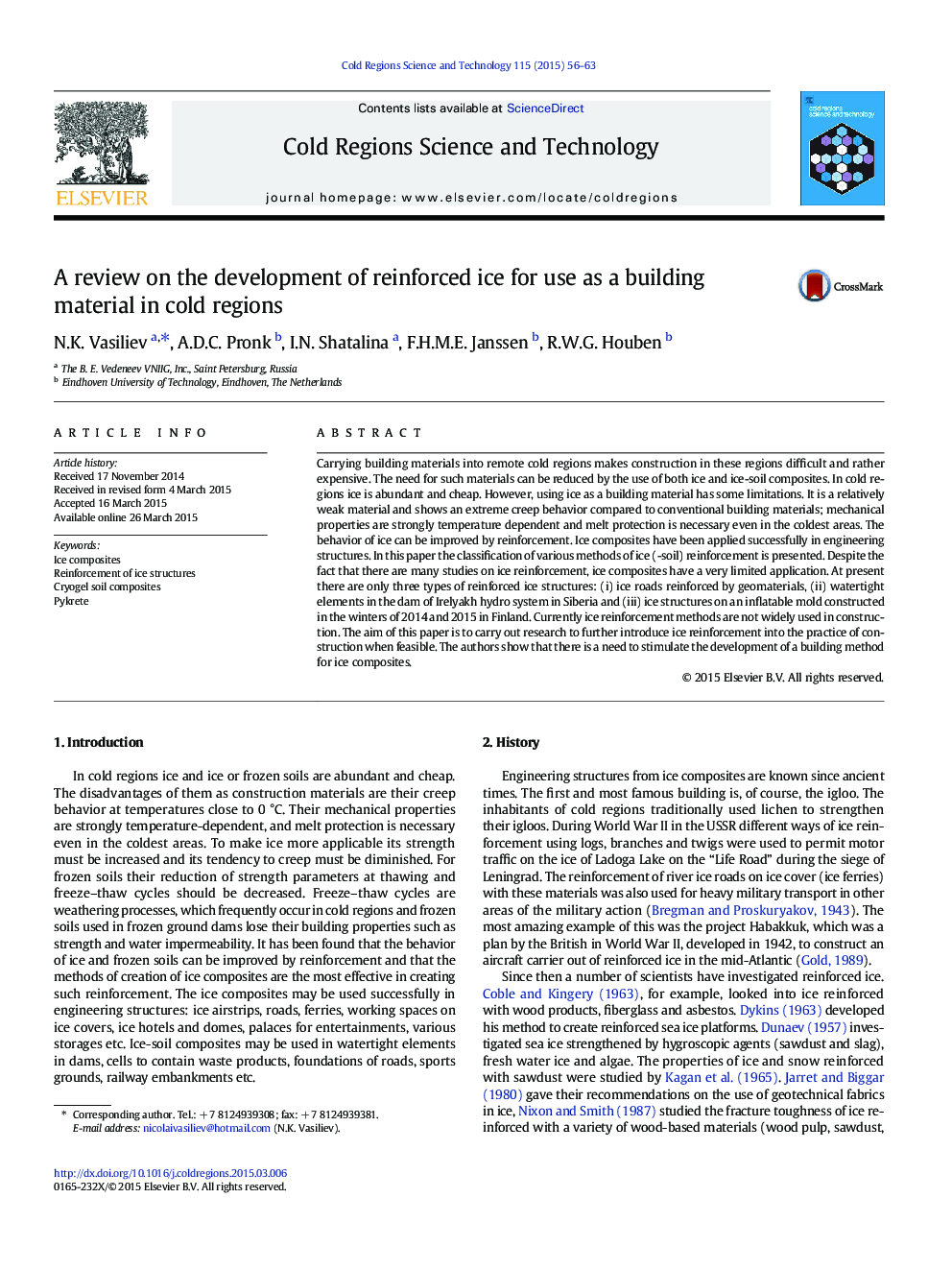| Article ID | Journal | Published Year | Pages | File Type |
|---|---|---|---|---|
| 6426845 | Cold Regions Science and Technology | 2015 | 8 Pages |
â¢The behavior of ice as a building material can be improved by reinforcement.â¢The classification of various methods of ice (-soil) reinforcement is presented.â¢At present there are 3 types of reinforced ice structures made from ice composites.â¢Reinforced ice structures: ice roads and ice-soil watertight elements are described.â¢Wood-fiber-reinforced ice structures on inflatable molds are described.
Carrying building materials into remote cold regions makes construction in these regions difficult and rather expensive. The need for such materials can be reduced by the use of both ice and ice-soil composites. In cold regions ice is abundant and cheap. However, using ice as a building material has some limitations. It is a relatively weak material and shows an extreme creep behavior compared to conventional building materials; mechanical properties are strongly temperature dependent and melt protection is necessary even in the coldest areas. The behavior of ice can be improved by reinforcement. Ice composites have been applied successfully in engineering structures. In this paper the classification of various methods of ice (-soil) reinforcement is presented. Despite the fact that there are many studies on ice reinforcement, ice composites have a very limited application. At present there are only three types of reinforced ice structures: (i) ice roads reinforced by geomaterials, (ii) watertight elements in the dam of Irelyakh hydro system in Siberia and (iii) ice structures on an inflatable mold constructed in the winters of 2014 and 2015 in Finland. Currently ice reinforcement methods are not widely used in construction. The aim of this paper is to carry out research to further introduce ice reinforcement into the practice of construction when feasible. The authors show that there is a need to stimulate the development of a building method for ice composites.
